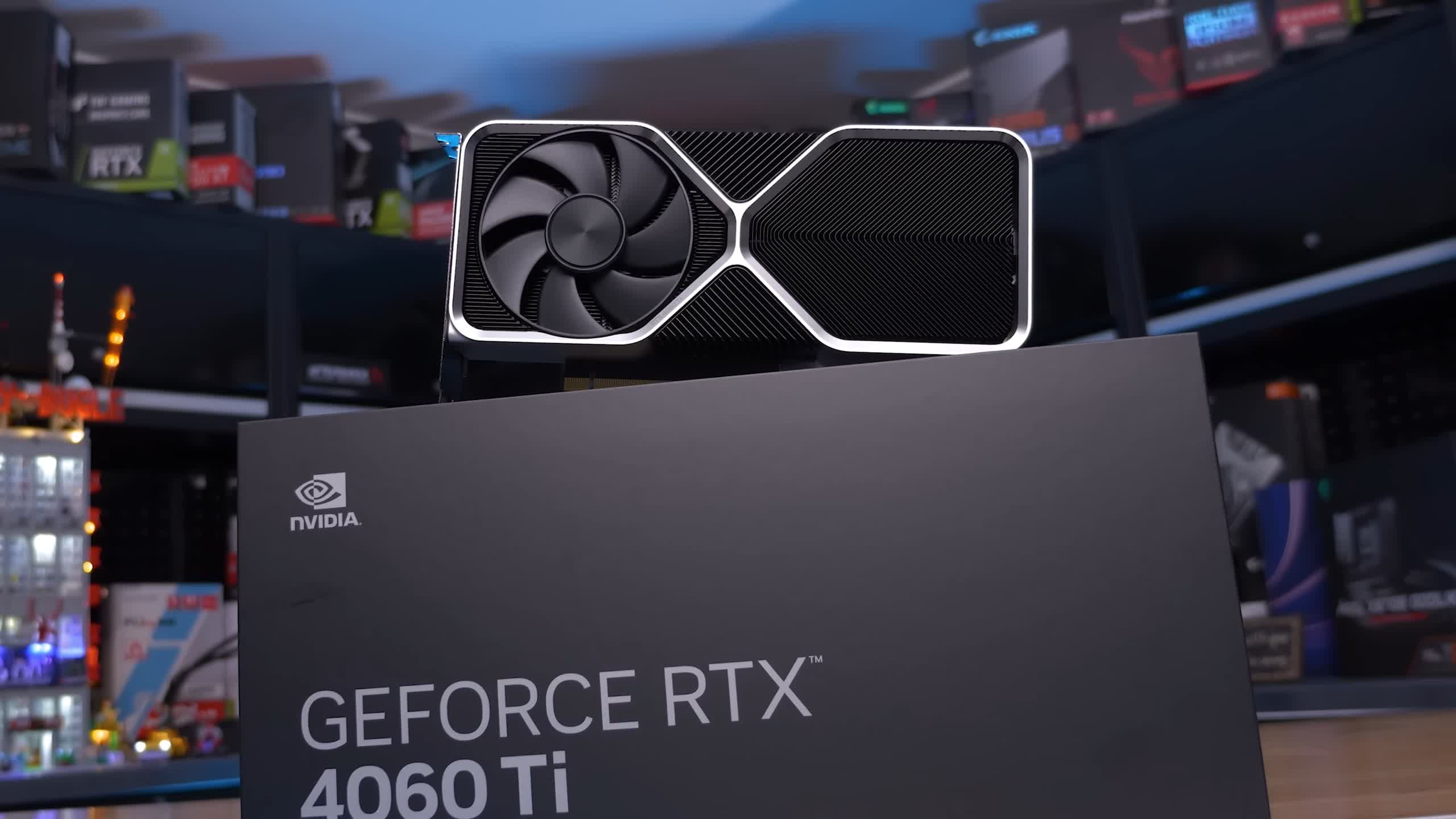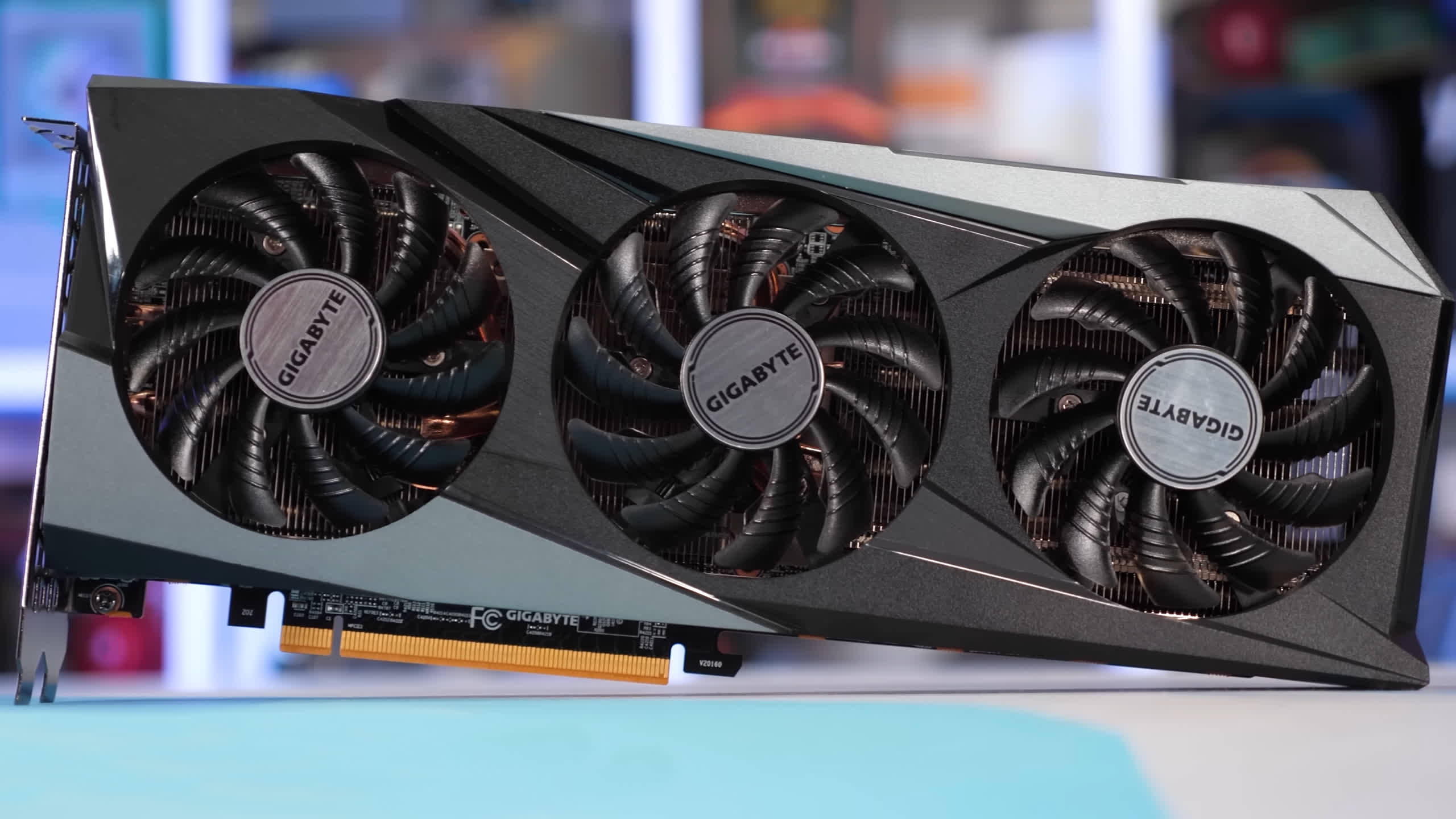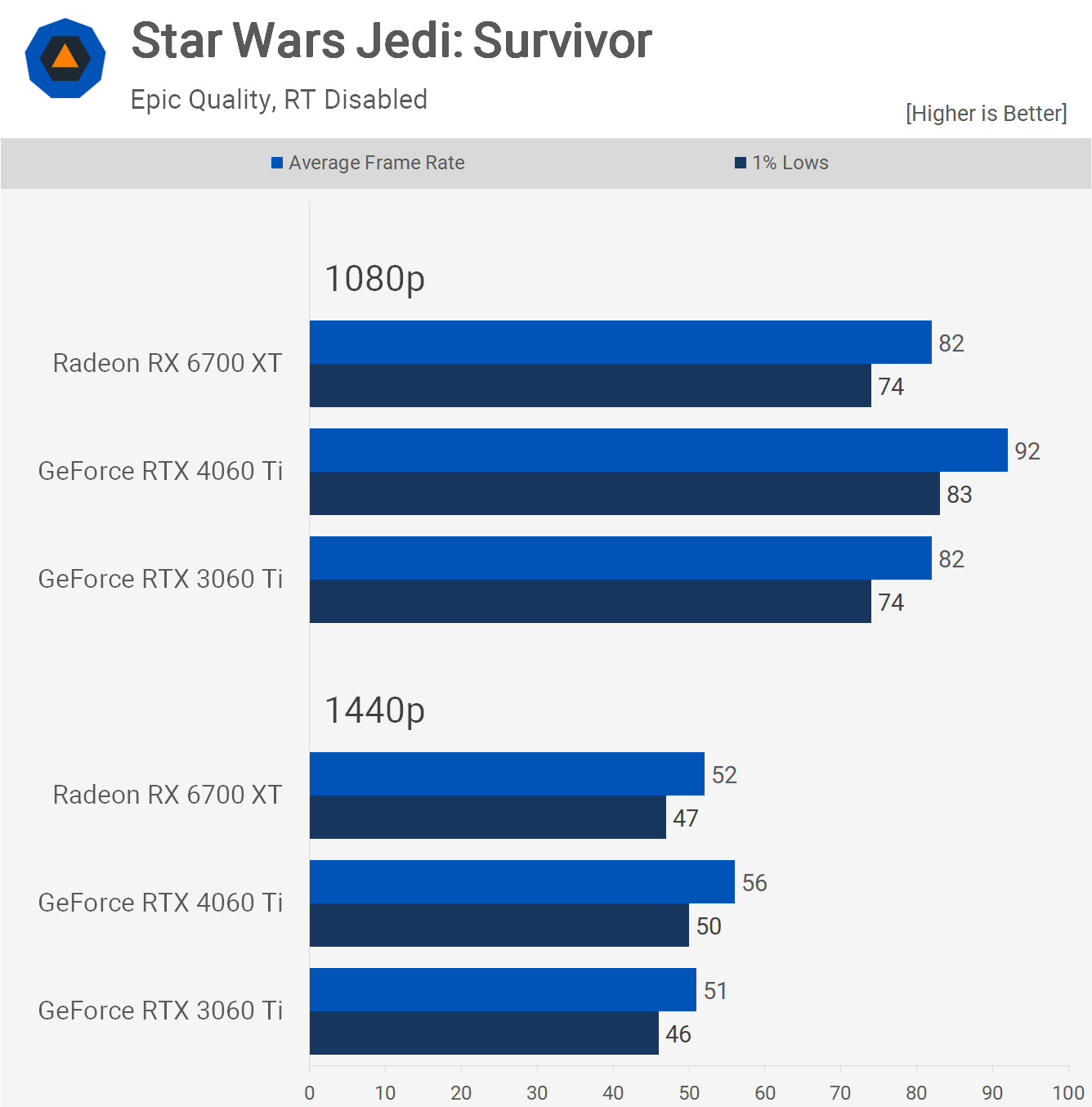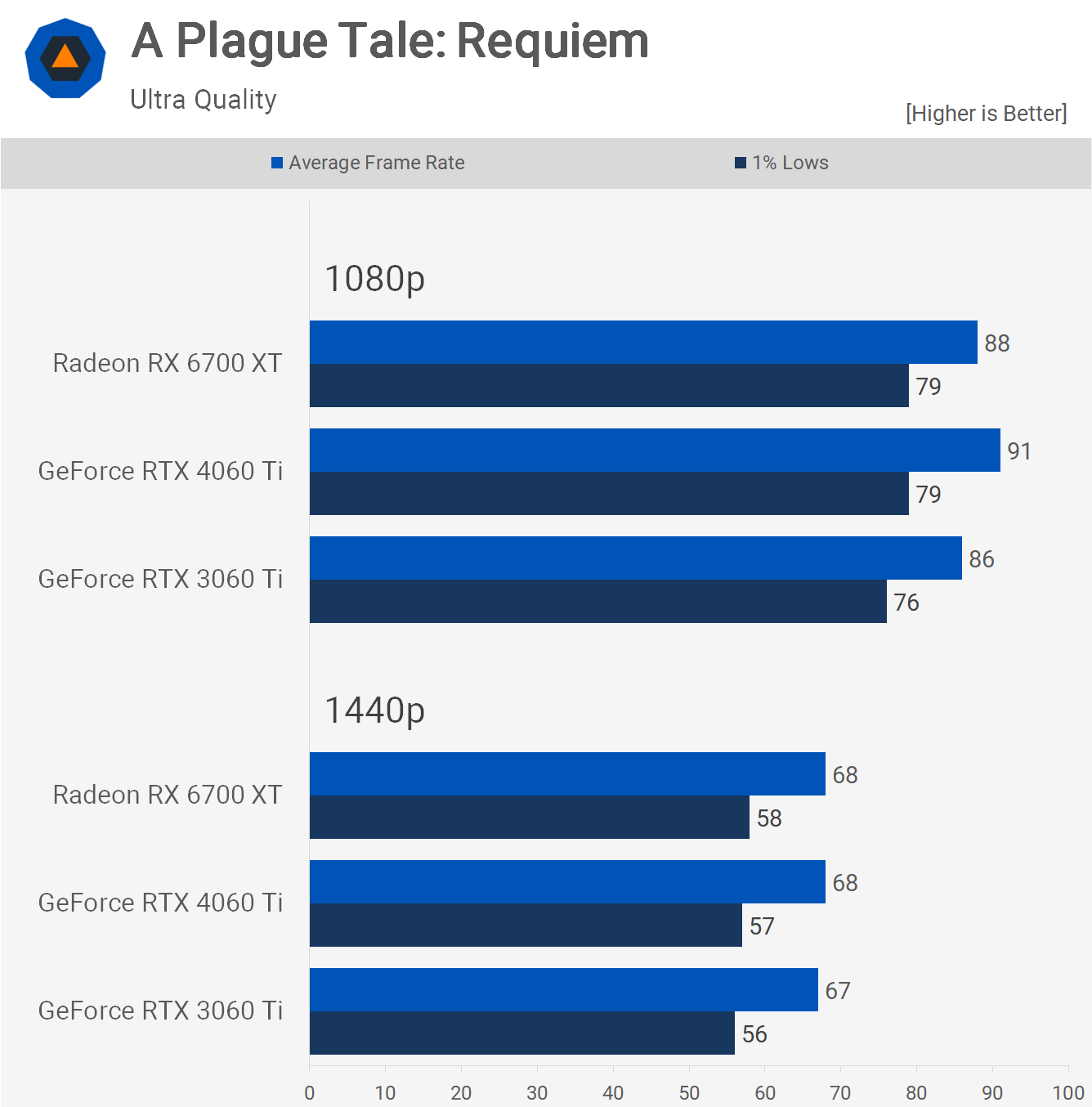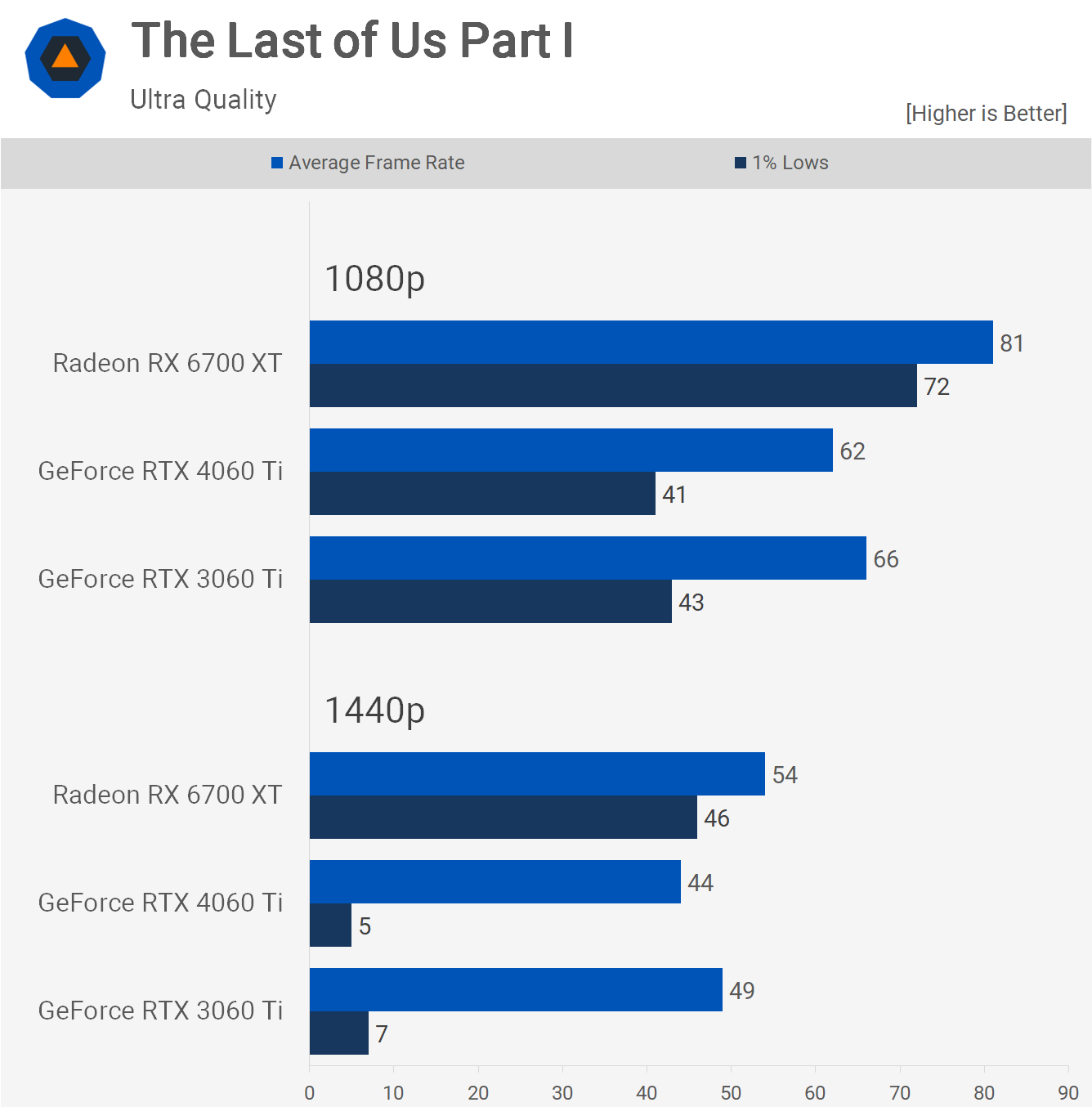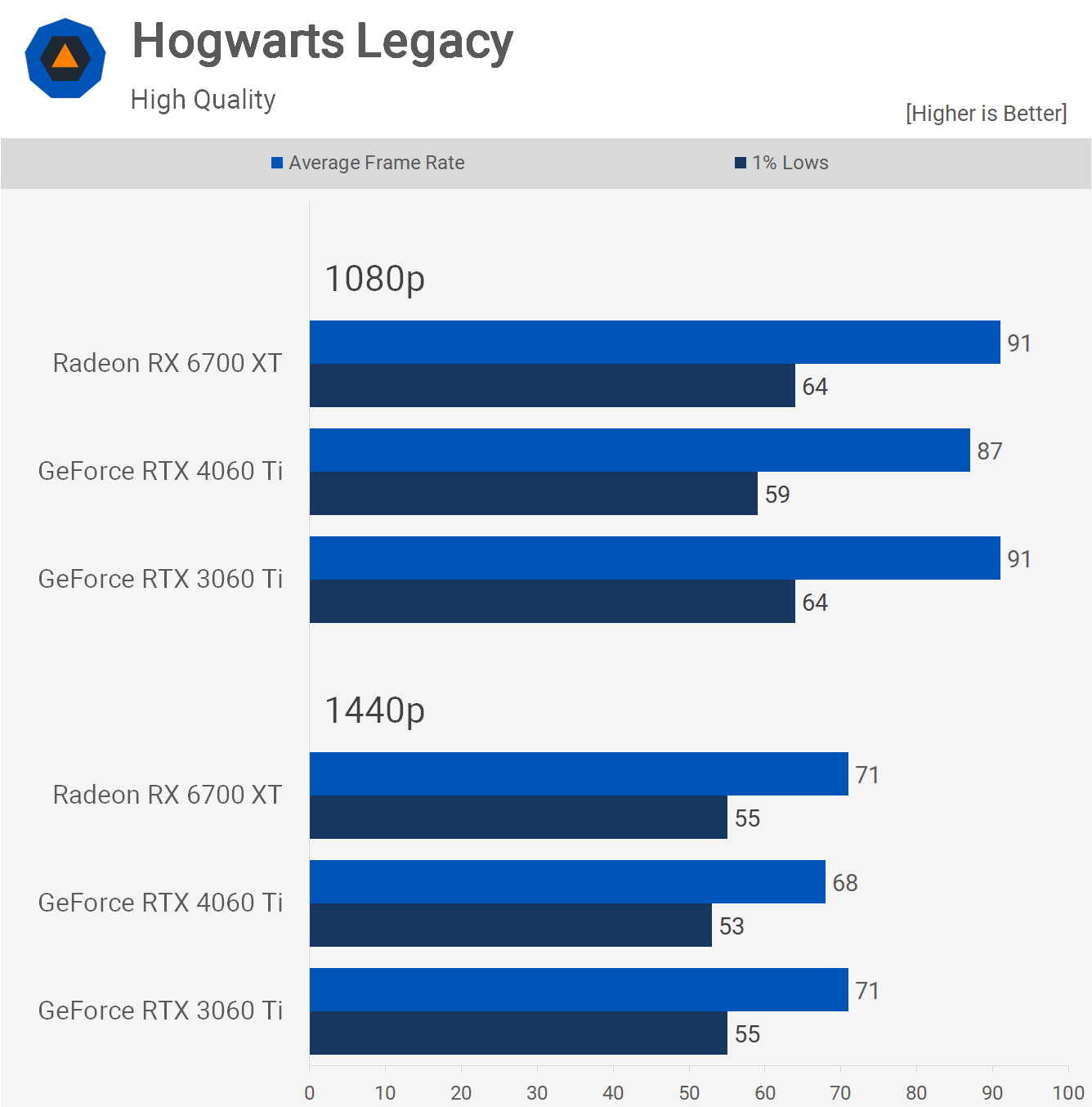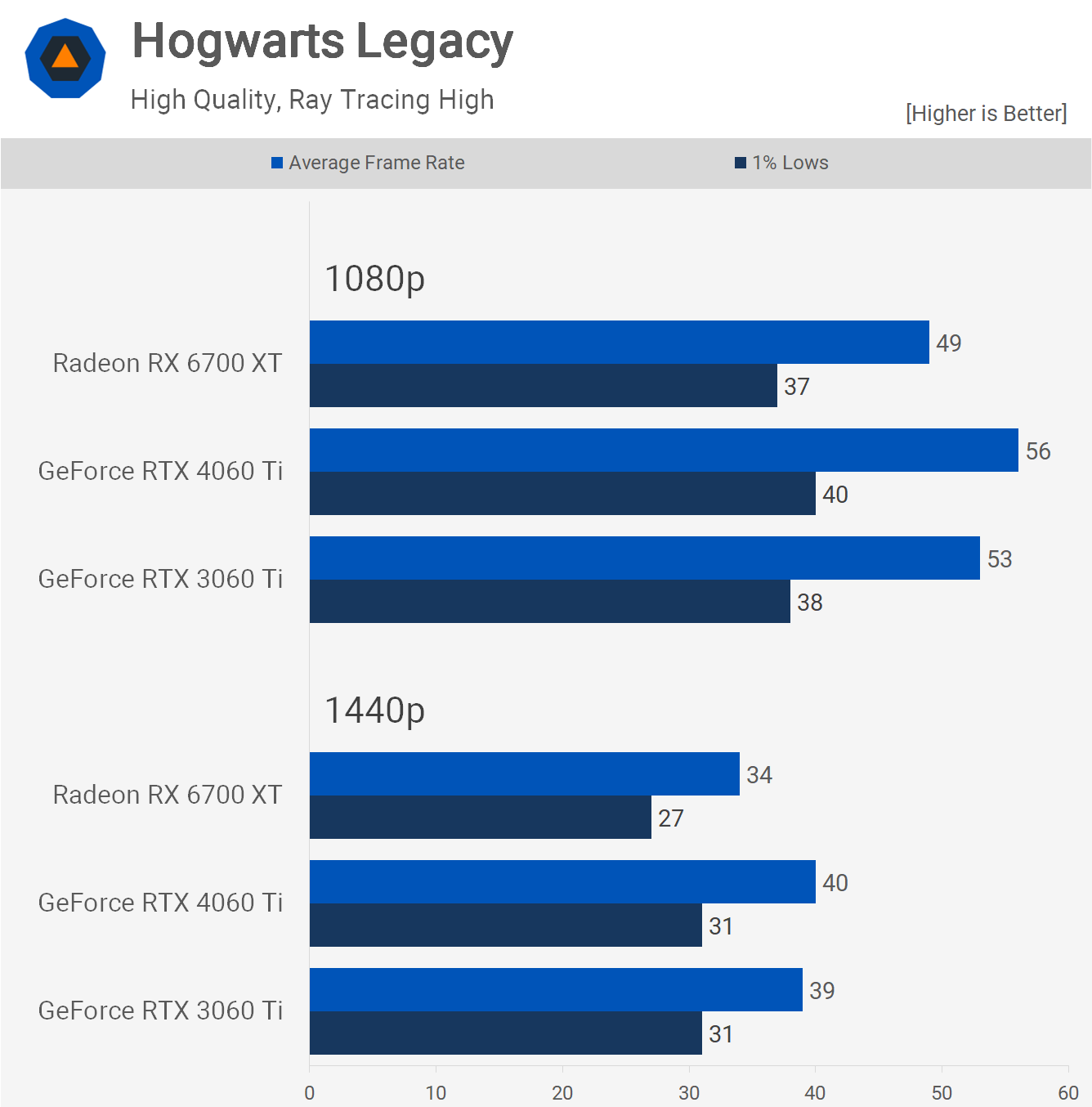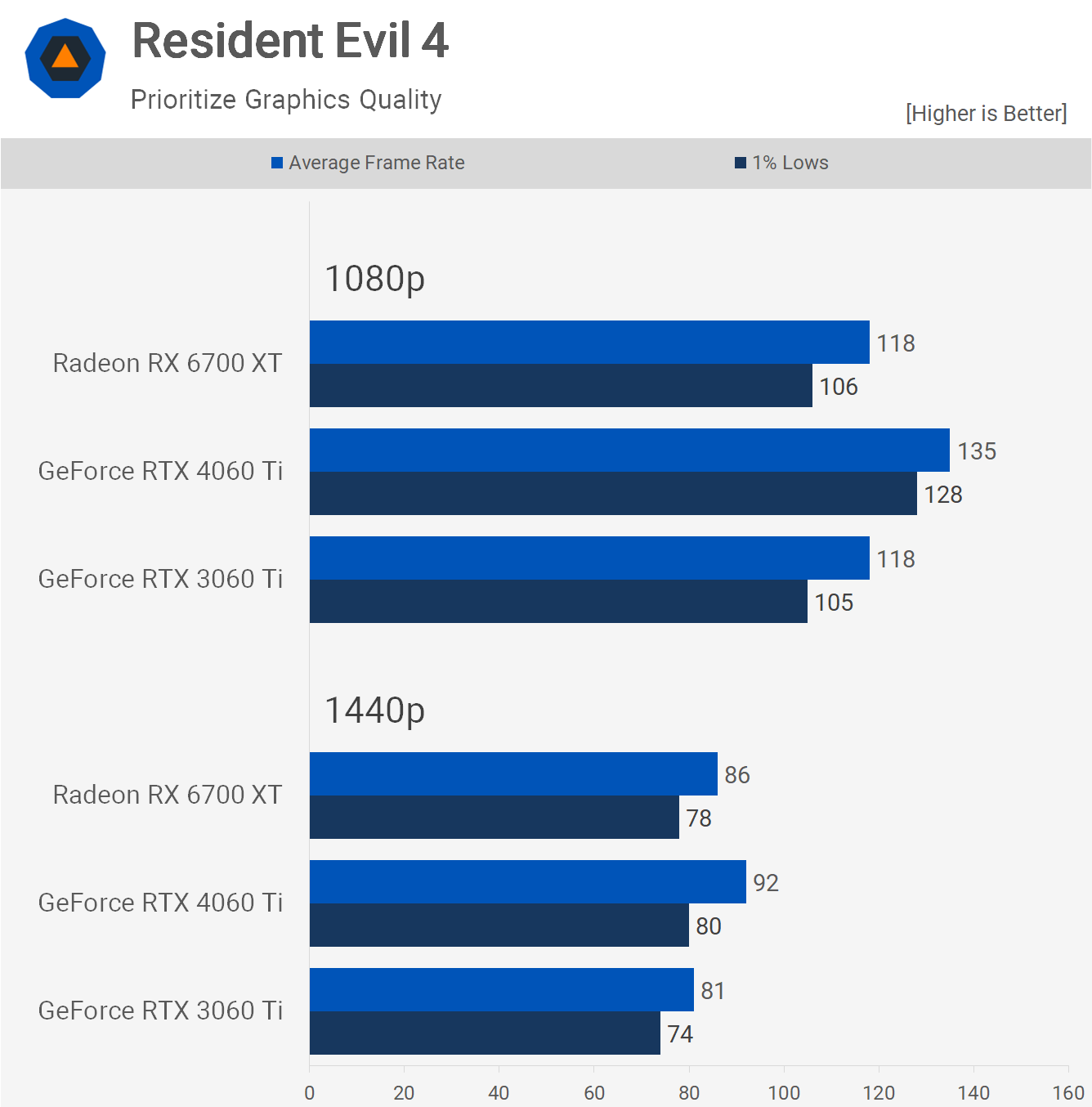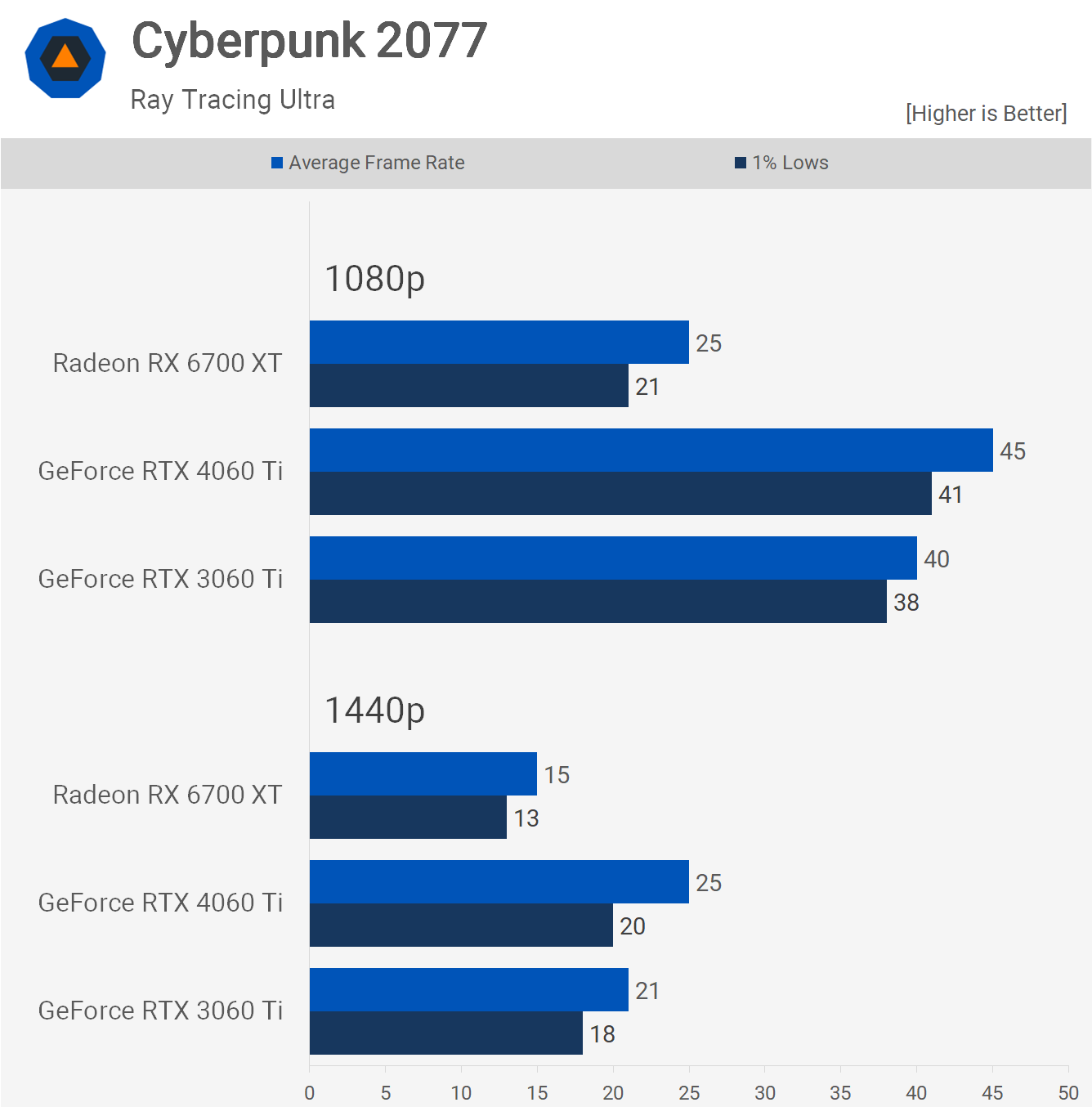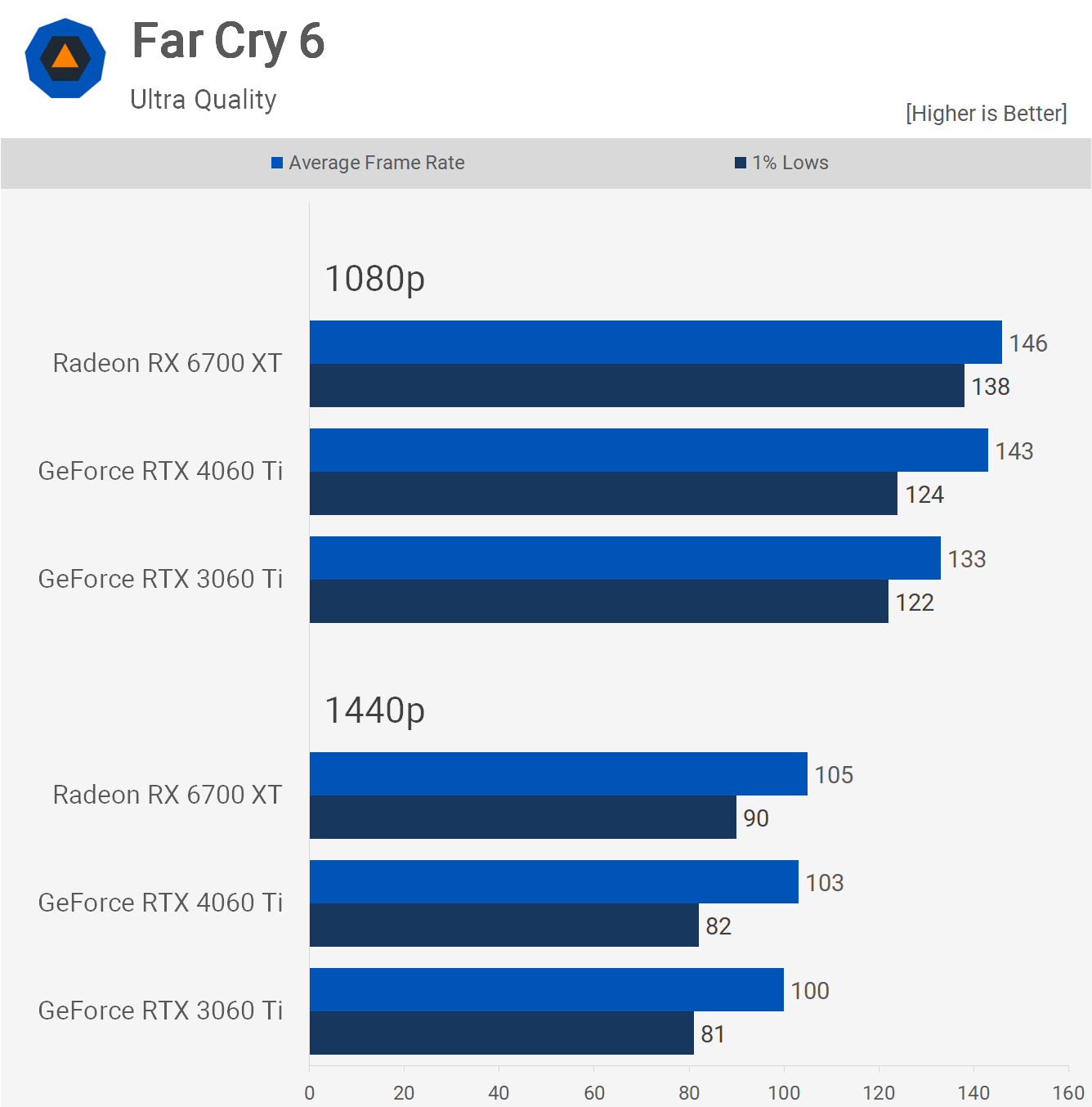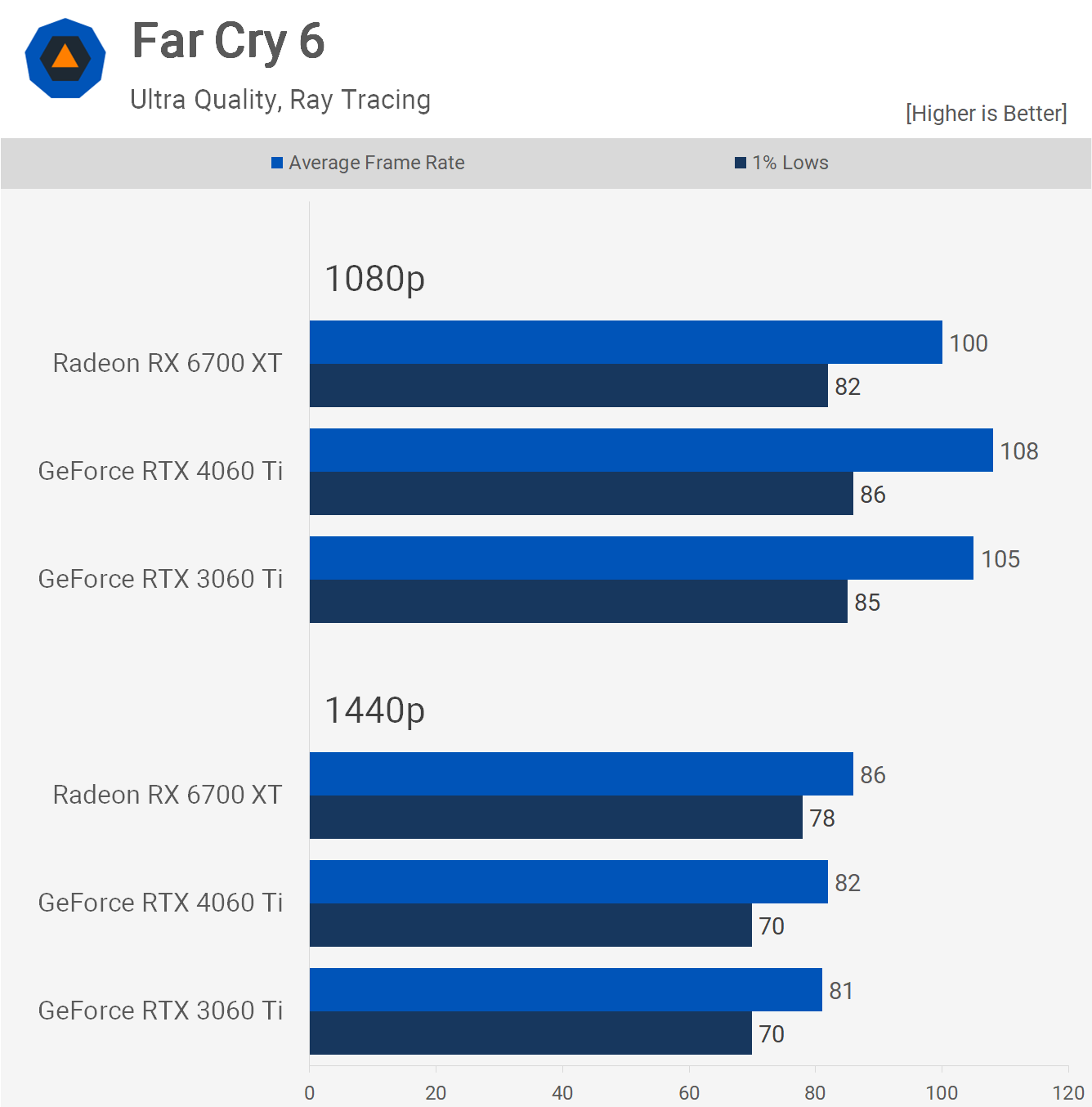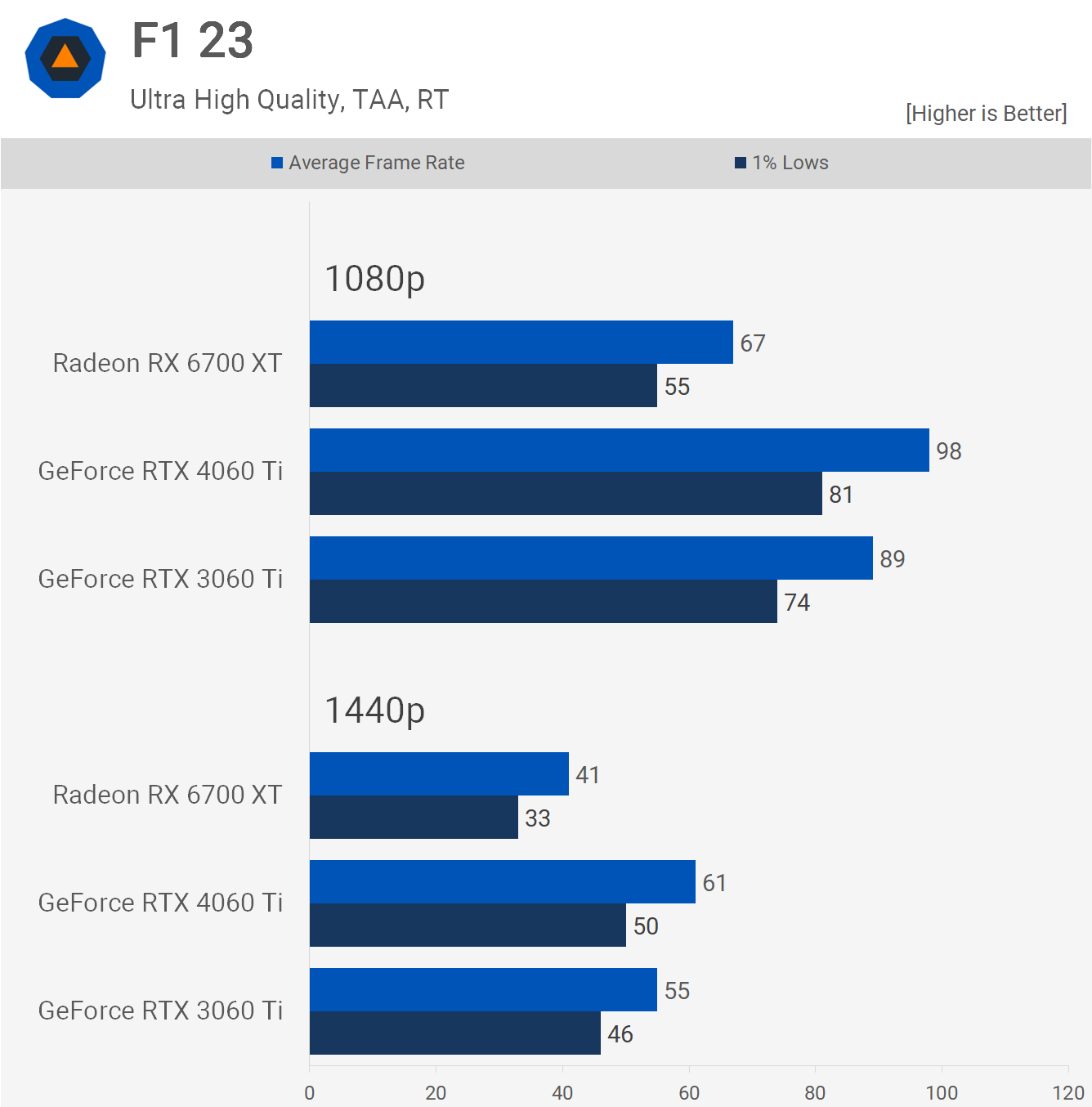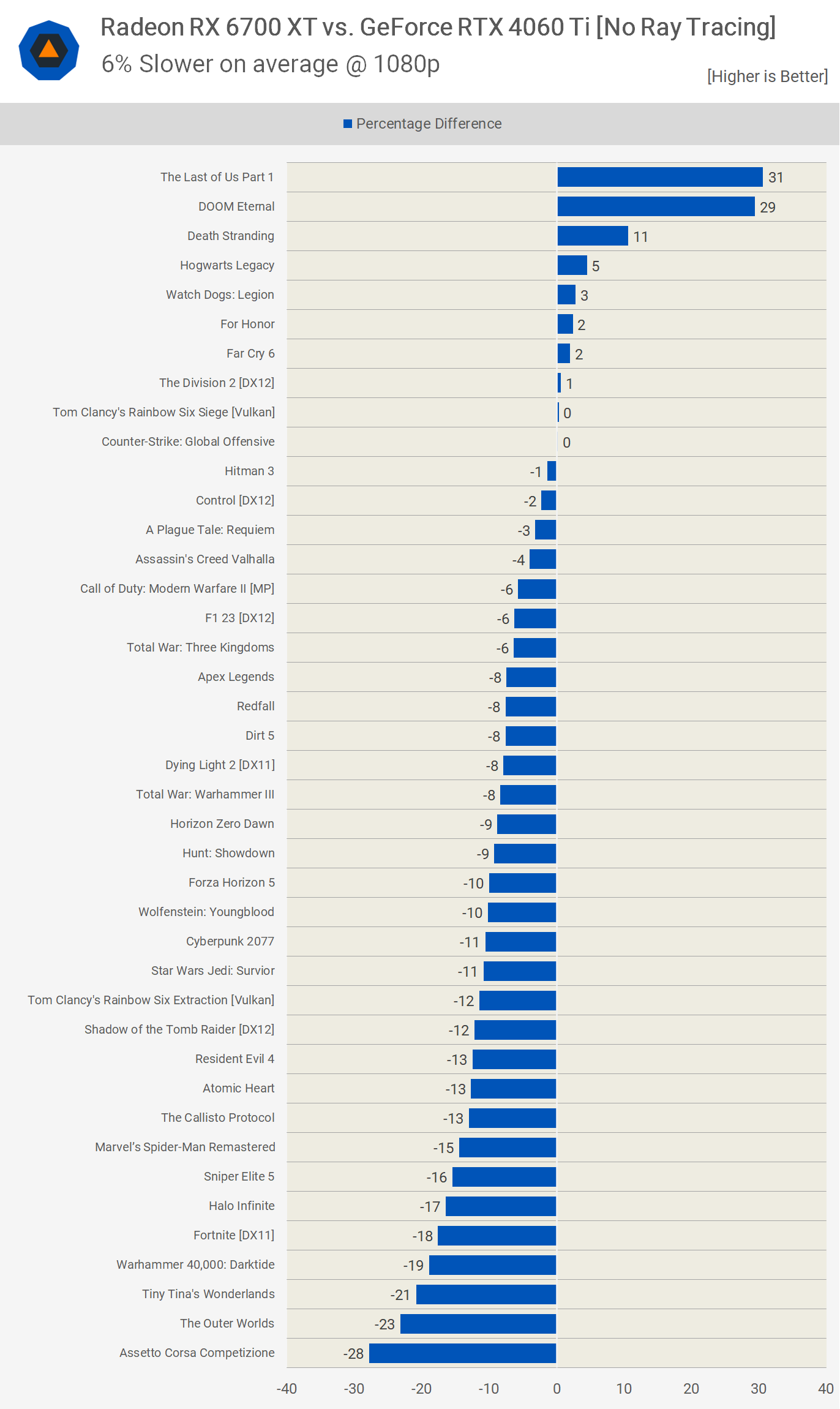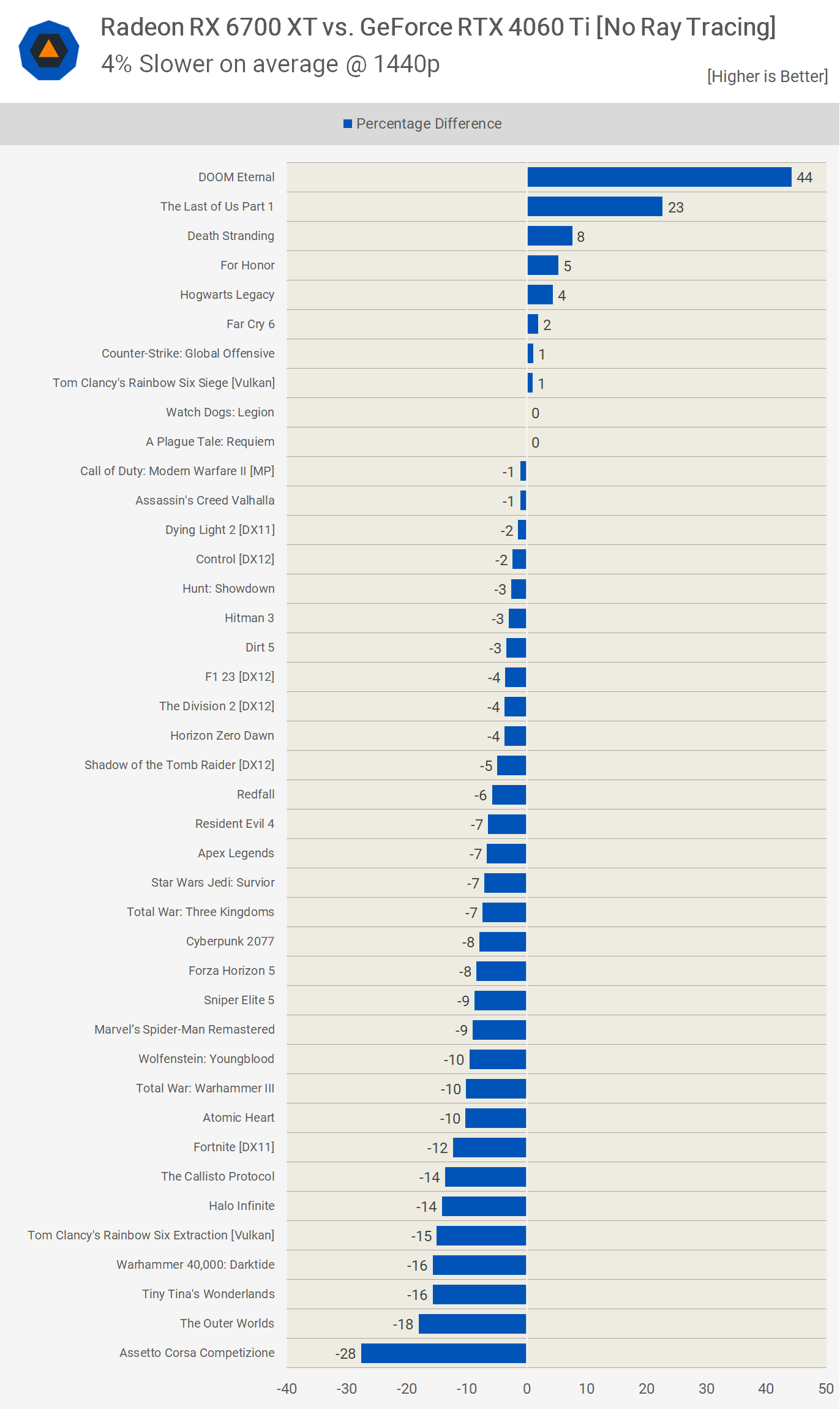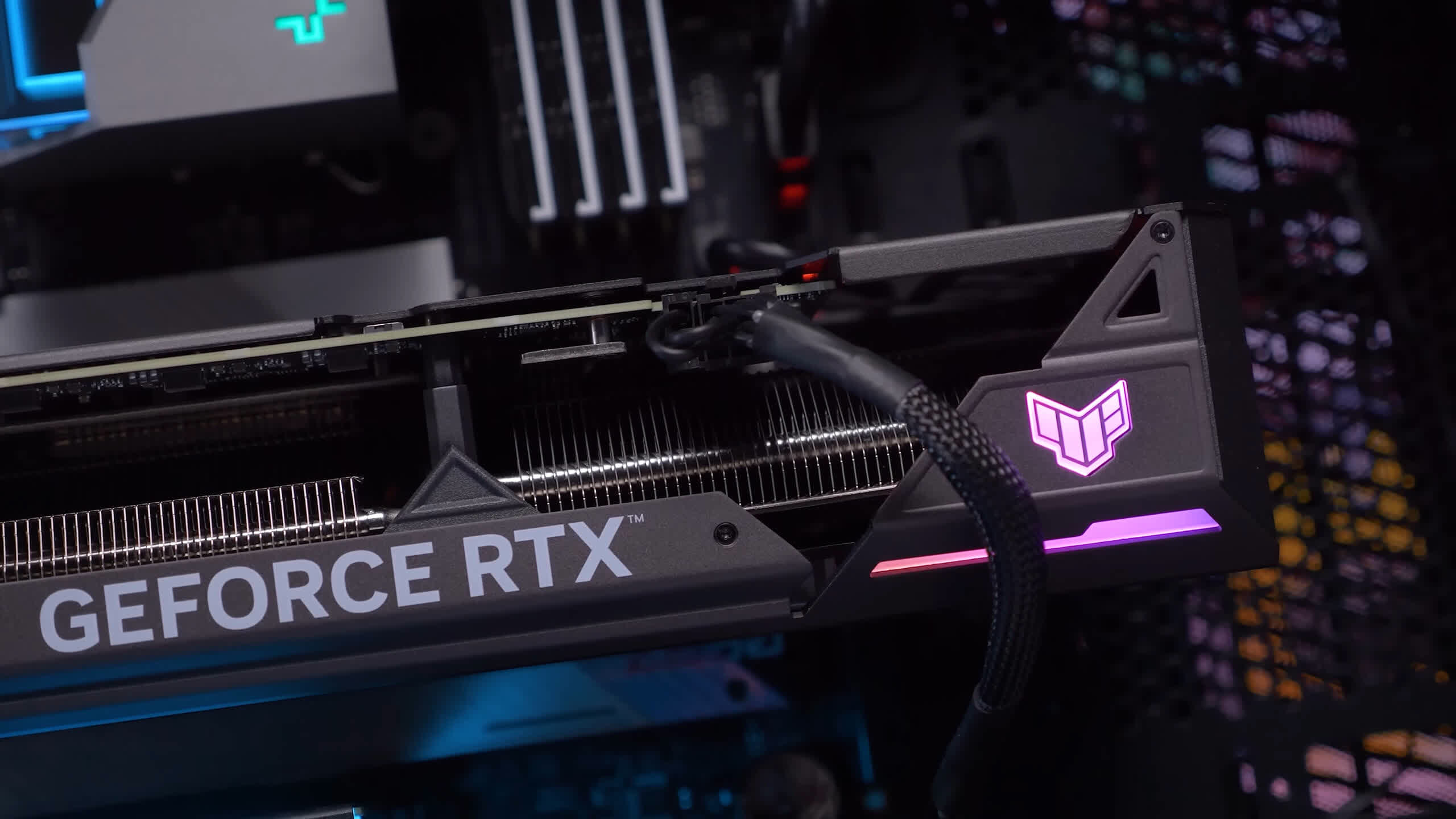Over the past few months, we've spent a ton of time testing and reviewing the latest generation of mainstream GPUs from AMD and Nvidia, which are expected to be capable of 1440p given their pricing range between $270 and $400. However, to briefly summarize our experience, these new products have been extremely underwhelming.
The RTX 4060 Ti arrived with a price tag of $400, the standard 4060 at $300, and the Radeon RX 7600 was originally advertised at $300, only for AMD to revise the price to $270 at the last minute.
A striking commonality among these is their 8GB frame buffer and their overall underwhelming performance at their respective prices. This is particularly true for the RTX 4060 Ti, with a 16GB version coming at an even higher price – a development we are not particularly enthusiastic about.
The disappointment with the RTX 4060 Ti stems from several factors. Ignoring the 8GB VRAM buffer on a $400 graphics card in mid-2023, there are two other notable issues. First, the generation uplift presented here is laughable; our previous 50 game benchmark showed that the 4060 Ti is a mere 8% faster than the 3060 Ti at 1080p and 5% faster at 1440p.
Thus, it's fair to conclude that it falls short of expectations. But it manages to get even more disheartening considering that as of last September – less than a year ago – the Radeon 6700 XT has been available for less than $400. By November, the price had dropped to $350 and has more recently dipped to around $320.
Based on our day-one review, the Radeon 6700 XT is on average just ~5% slower than the RTX 4060 Ti. Additionally, the Radeon GPU doesn't falter in VRAM demanding games as it comes with a larger 12GB buffer, making it much better suited for 1440p gaming.
Granted, you lose out on DLSS support and ray tracing performance isn't nearly as competent – provided you don't exceed the 8GB buffer. However, given the current 20% discount along with the bonus of extra VRAM, it's challenging to dismiss the appeal of the 6700 XT. It's regrettable that newly released current-generation parts are not outperforming nearly three-year-old products as expected.
For today's big benchmark, we aim to compare the Radeon 6700 XT and GeForce RTX 4060 Ti across a wider array of games and ray tracing configurations than we have in the past. It will be interesting to see how they stack up.
For our tests, we used the Ryzen 7 7800X3D, paired with the Gigabyte X670E Aorus Master and 32GB of DDR5-6000 CL30 memory. We tested 50 games at both 1080p and 1440p. We will cover the more interesting results one by one, before examining the overall margins observed across all the tested games in a single graph as usual. Let's get into it…
Benchmarks
In Star Wars Jedi Survivor, the 6700 XT and 3060 Ti are neck and neck at both tested resolutions, rendering the 4060 Ti only 12% faster at 1080p and 8% faster at 1440p. That's somewhat underwhelming, considering the 4060 Ti costs 25% more and was released 2.5 years later.
In A Plague Tale: Requiem, the performance among the 6700 XT, 3060 Ti, and 4060 Ti are even closer, with the 4060 Ti outpacing the Radeon GPU by a mere 3% at 1080p, while maintaining identical performance at 1440p.
An issue we've previously detailed with the RTX 4060 Ti is its 8GB VRAM buffer, considering the GPU itself is not only quite pricey but also reasonably powerful. The Last of Us Part 1 performs well on the high preset, but those aiming to maximize the game's settings will need more than 8GB of VRAM, even at 1080p, to avoid any stuttering.
The real issue surfaces at 1440p, where 8GB graphics cards like the 4060 Ti become completely unusable, whereas the 6700 XT performs smoothly despite its sub-60 fps performance. Results like these don't bode well for the future of Nvidia's new $400 GPU.
Doom Eternal presents another concern, highlighting another weakness of the RTX 4060 Ti: its restricted 128-bit wide memory bus, which results in less memory bandwidth than previous products. As Doom is a memory-sensitive game, the 6700 XT was 29% faster than the 4060 Ti at 1080p and an impressive 44% faster at 1440p. Although the 4060 Ti still delivers a playable performance, it's clear that it may struggle with future memory-demanding titles.
In Hogwarts Legacy, the 6700 XT and 3060 Ti are again neck and neck, and in this instance, both outperform the 4060 Ti, though the margin is only 5% at 1080p.
Enabling ray tracing gives the 4060 Ti an advantage, but even so, the 4060 Ti is only 14% faster than the 6700 XT in this cutting-edge new title, a rather disappointing result.
Next, we tested Resident Evil 4 using the second-highest quality preset, where the 6700 XT and 3060 Ti matched closely, although the Radeon GPU did pull ahead at 1440p. Compared to the 4060 Ti, the 6700 XT was 13% slower at 1080p and 7% slower at 1440p, so the margins aren't substantial. Something quite unexpected occurs when we enable ray tracing.
The max quality RT preset requires 12GB of VRAM, an issue for the new RTX 4060 Ti due to its 8GB limit. While the game plays reasonably well after a few updates, overall performance is weak, with the 6700 XT offering 36% more frames at 1080p and 33% more at 1440p.
In Cyberpunk 2077, the 3060 Ti and 6700 XT are closely matched without RT effects enabled. This means the Radeon GPU is only 11% slower than the 4060 Ti at 1080p and 8% slower at 1440p. While these are reasonable margins, particularly at 1080p, given the difference in price, the margin is actually more favourable for AMD.
Enabling ray tracing in Cyberpunk 2077 significantly hampers the 6700 XT, though, to be fair, it similarly impacts the GeForce GPUs without the aid of upscaling. In any case, the 4060 Ti was 80% faster at 1080p, an incredible difference, though remember that the 3060 Ti was already 60% faster than the 6700 XT, suggesting this configuration is not favourable for the Radeon GPU.
In Far Cry 6, the 6700 XT, despite using the 'Ultra' quality preset, delivers 146 fps at 1080p, making it 2% faster than the 4060 Ti, another disappointing result for the new GeForce GPU.
With ray tracing enabled, the 6700 XT manages to keep pace with the 4060 Ti at 1080p, trailing by a mere 7% margin. Furthermore, at 1440p, it actually performs faster, albeit by a slight 5% margin.
Lastly, in F1 23, the 3060 Ti and 6700 XT again match closely. The 4060 Ti is faster in this example, though only by a 7% margin at 1080p and 4% at 1440p, indicating very similar performance among all three GPUs.
When enabling ray tracing with the 'Ultra High' preset, the 6700 XT faces similar troubles as we saw in Cyberpunk 2077. Although still playable at 1080p, the 6700 XT was 32% slower than the 4060 Ti, a significant margin, suggesting that ray tracing should be disabled when using the previous generation Radeon GPU.
Performance Summary
Depending on the game, the 6700 XT and RTX 4060 Ti can be quite evenly matched, and enabling ray tracing doesn't always hand the win to Nvidia. These intriguing results prompt us to take a look at a 50 game comparison to obtain a clear picture of their standings...
At 1080p, the Radeon 6700 XT is on average only 9% slower than the 4060 Ti, an excellent result for the AMD GPU considering it's currently 20% cheaper. There are a few instances where the 6700 XT even outperformed the GeForce, such as in Resident Evil 4 using ray tracing, The Last of Us Part 1, Doom Eternal, and Death Stranding, to name a few examples.
However, there are numerous instances where the 6700 XT falls significantly behind the 4060 Ti, with 9 games where it was slower by 20% or more.
At 1440p, the gap narrows further meaning the Radeon 6700 XT is on average only 7% slower than the 4060 Ti at the higher resolution. Although the Radeon GPU was more often slower than the 4060 Ti, the margin was typically less than 10% either way, with 56% of all tested configurations only seeing single-digit margins.
For those not interested in ray tracing performance, we've excluded any configurations with RT effects enabled. As a result, the margin at 1080p is reduced to just 6%, and now there's only 3 games where the 6700 XT was slower by a margin of 20% or more.
Similarly, for those gaming at 1440p but no ray tracing enabled, the difference becomes even smaller. Here, the Radeon 6700 XT is 4% slower on average, which closely aligns with the 5% margin observed in our day-one review. So, depending on what you're after and the games you play, the difference between these two GPUs could be quite small.
And the Winner is...
If you're seeking an affordable GPU for 1440p gaming in mid-2023, your options are very limited unless you're willing to spend $600, as there's no current-generation GPU available at a lower price point. So, our best advice for those in need of an affordable GPU for 1440p gaming is to snatch up a low-priced Radeon RX 6700 XT before stock runs out.
The next best option we know of is the 16GB version of the RTX 4060 Ti. However, at a $500 price tag, it will basically deliver what we've observed from the 8GB model here, with some improvements for games such as Doom Eternal, Resident Evil 4, and The Last of Us Part 1. These enhancements could boost the overall performance by a few percent, while costing almost 60% more than the existing Radeon 6700 XT stock.
Apart from that, your choices are to either spend $600 on the GeForce RTX 4070 to get a 12GB buffer, or to downgrade to an RTX 3060 12GB for $290. However, that's ~25% slower than the Radeon 6700 XT for a meager 10% saving, so it's not truly worthwhile.
In reality, the better choices are either a Radeon 6700 XT for $320 - $350, or a GeForce RTX 4070 for $600.
This makes choosing an affordable 1440p GPU quite straightforward: opt for the 6700 XT and hope to secure one before the stock dries up. Those ~$300 listings for the 6700 XT are becoming less frequent, suggesting that the stock may deplete soon, however as of writing, the Sapphire Pulse version was available for $320.
Even after the last sub-$350 Radeon 6700 XT is sold, it doesn't mean that the RTX 4060 Ti instantly becomes a superior product. At $400, it's consistently going to be a poor offering that you should try to avoid if possible. Its performance barely marks an improvement compared to the 2.5-year-old GeForce product it's replacing, the 3060 Ti. In fact, it manages to be slower in several games.
Shopping Shortcuts:
- AMD Radeon RX 6700 XT on Amazon
- Nvidia GeForce RTX 4070 on Amazon
- Nvidia GeForce RTX 4060 Ti on Amazon
- AMD Radeon RX 7600 on Amazon
- AMD Radeon RX 7900 XT on Amazon
- Nvidia GeForce RTX 4090 on Amazon
- AMD Ryzen 7 7800X3D on Amazon
Further Testing
Since we posted this review, we have written new comparisons and run relevant benchmarks you may be interested in:

